[ad_1]
There are a number of different models and versions of the Raspberry Pi computer. But which one is best for your project?
Here’s a summary of the main models available:
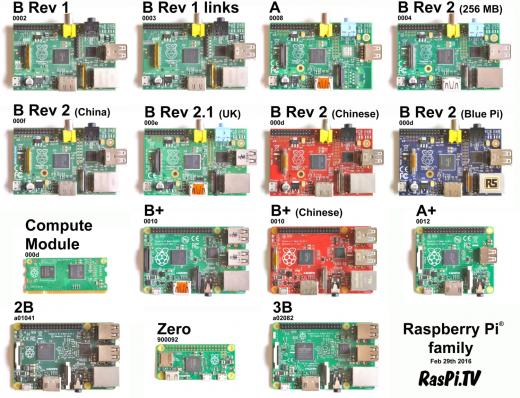
Photo by Alex Eames of raspi.tv. Used with permission. All Rights Reserved.
| Model | Specifications | Price |
|---|---|---|
| Pi 3 Model B | CPU: 1.2GHz 64-bit quad-core ARMv8 RAM: 1GB USB: 4 ports Connectivity: Ethernet, Wi-Fi, Bluetooth |
$35 |
| Pi 2 Model B | CPU: 900MHz 32-bit quad-core ARMv8* RAM: 1GB USB: 4 ports Connectivity: Ethernet |
$35 |
| Pi 1 Model B+ | CPU: 700MHz 32-bit quad-core ARMv6 RAM: 512MB USB: 4 ports Connectivity: Ethernet |
$25 |
| Pi 1 Model A+ | CPU: 700MHz 32-bit quad-core ARMv6 RAM: 512MB** USB: 1 port Connectivity: None |
$20 |
| Pi Zero | CPU: 1GHz 32-bit quad-core ARMv6 RAM: 512MB USB: 1 micro USB OTG port Connectivity: None |
$5 |
Note all Pi models have the same VideoCore IV GPU, an HDMI port, include a 40-pin GPIO header, and feature both a camera interface (CSI) and display interface (DSI). The Pi Zero’s HDMI port is mini-HDMI.
* The Pi 2 was recently upgraded from the BCM2836 ARMv7 to the BCM2837 ARMv8 CPU found in Pi 3. It’s underclocked at 900MHz and does not include Wi-Fi or Bluetooth.
** The Model A+ was recently upgraded to include 512MB RAM. Its model name and price point remained unchanged.
Raspberry Pi 3
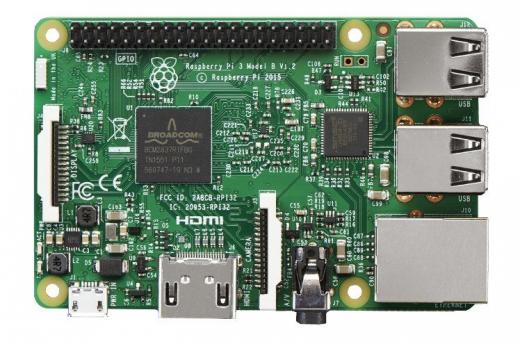
The model with the highest specification is the Raspberry Pi 3 Model B, so for many general purpose projects this is your best bet. It’s the most powerful Pi, with the fastest clock speed, the most RAM, and best all-round feature set. If you need speed and power, or your project would benefit from built-in Wi-Fi or Bluetooth, you want the Pi 3. Other models are cheaper, but at $35 it’s excellent value for the money.
The Pi 3 is gives a genuinely pleasant desktop PC experience, in no small part thanks to four years of extreme work in optimizing the official Pi operating system, Raspbian. The Pi 3 boots in a matter of seconds, the web browser flies, you can open Minecraft and create a world in no time at all, and intensive applications like LibreOffice and Mathematica respond as they should on a decent PC.
It’s also perfect for retro gaming emulation. As Stack Overflow co-founder Jeff Atwood wrote recently, “the ascendance of Raspberry Pi has single-handedly revolutionized the emulation scene. It’s fast enough to emulate N64 and PSX and Dreamcast reasonably, all for a whopping $35.”
If you ever tried to use OpenCV for computer vision on the Pi 1, you may have had limited success. With the more powerful Pi 3, this is much more feasible.
Pros: Fast, powerful, excellent value for money.
Cons: More power hungry.
Perfect for: Desktop PC, media center, web server, gaming emulator, computer vision.
Raspberry Pi 2
If you own a Pi 2, it’s more than likely the original BCM2836-based Model B. Recently, the Pi 2 was upgraded to use the BCM3836 CPU found in the Pi 3. The only real difference between this and the 3B is the lack of Wi-Fi and Bluetooth.
If you have the 2B, you’ll find it to be a reasonable desktop PC, though not as powerful as the Pi 3. It handles most things almost as well as a Pi 3 would, and has the same RAM and GPU.
If you owned both a Pi 2 and Pi 3, you could use the 3 for projects that need wireless connectivity and the 2 for ones that don’t, and you wouldn’t notice much difference between them. The Pi 2 runs on less power than the 3, so that’s a bonus if you’re not pushing it to its limit.
Gaming emulation, playing video and regular use as a desktop PC would also be appropriate for this model.
Pros: Fast, powerful, good value for money.
Cons: Roughly the same price as superior Pi 3, lacking wireless connectivity.
Perfect for: Desktop PC, media center, web server, gaming emulator.
Raspberry Pi 1 Model B+
Technically speaking, the Model B+ was only a slight improvement on the original Model B, but it added two USB ports and expanded the GPIO header from 26 to 40 pins. It also moved the Pi to a new standard form factor, which it has stuck with for its main models ever since. This format is well-received and ideal for building around. With the B+ came the HAT specification, a standard for add-on boards.
The B+ is perfectly good at most routine tasks, though there’s a noticeable sluggishness when using intensive applications like the web browser when compared to the quad-core models. Because every Pi has the same GPU, they all play HD video effortlessly, so using it as a media center is a good option. The only thing you’ll notice is the menus won’t work quite as smoothly as the Pi 2 or 3.
The B+ gives you a 40-pin GPIO header so you can play with HATs or just access the GPIO pins for electronics projects. You have ethernet and can easily add Wi-Fi and Bluetooth via the four USB ports. Its elegant design dropped some ugly components from the original Pi and neatened up the layout of the board, making it more visually appealing.
The Pi 1 CPU has been used in many millions of units. It’s probably the most stable and best supported single-board computer SoC in the world. The B+ has even been certified for space flight–it was used by astronaut Tim Peake on the International Space Station this year as part of the Astro Pi schools’ competition, which is expanding into a European-wide competition in 2017.
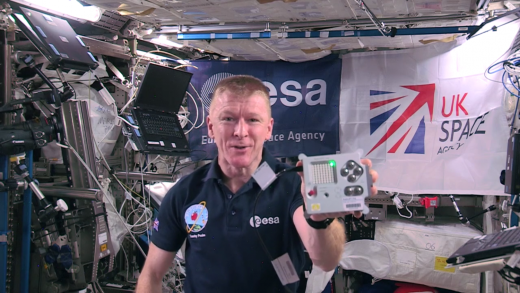
Photo by Tim Peake of the European Space Agency. Used with permission. All Rights Reserved.
Pros: Standard form factor, stability, price.
Cons: Slower and less powerful than other models, no wireless connectivity.
Perfect for: Media center, GPIO projects, robotics, information displays, International Space Station missions.
Raspberry Pi 1 Model A+
The A+ is a slimmed-down version of the B+ with the bank of USB ports and ethernet jack removed and replaced by a single USB port. At $20, it’s cheaper than the main models and still a good value.
If you don’t mind it lacking wireless connectivity or it being a bit sluggish on the desktop, you’ll get along fine with the A+. If it was your only Pi, you’d probably be frustrated with it, but you can do your programming on a Pi 3 and deploy the code to the A+ to benefit from its smaller size.
It’s not as small as the Pi Zero, but it does have a full-sized USB port and HDMI port, making it easy to connect up the essential peripherals. And if you want to embed it inside something like a robot, it’s not too bulky, which is nice.
If you have an A+, unless you bought it very recently, it is probably the original version with 256MB RAM. It was recently upgraded to 512MB, which will help with the heavy lifting and make regular desktop use more tolerable, but it’s still nowhere near as powerful as a Pi 2 or 3.
One reason you’d use the A+ over the Zero is that it has a DSI display interface, so you can use the official touch screen. If you want to leave a Pi running on low power or have it be battery or solar-powered, the A+ is your best option as it has the lowest power consumption of all models. See Alex Eames’s blog post on Pi Zero power usage.
Pros: Standard form factor, size, weight, stability, price.
Cons: Slower and less powerful than other models, one USB port, no wired or wireless connectivity.
Perfect for: High altitude ballooning, robotics, wall display.
Raspberry Pi Zero
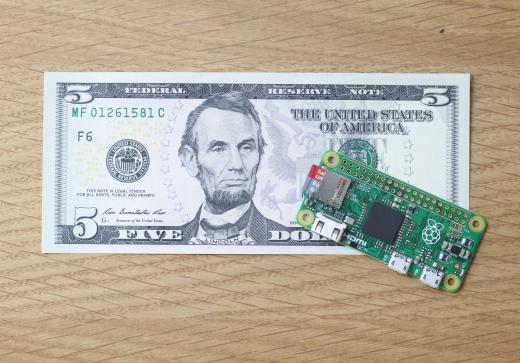
The Pi Zero is the smallest, lightest, cheapest Pi available. It’s not available in bulk (usually one per customer), so it’s not ideal if you need lots of them, but it’s perfect for embedded projects that don’t rely on wireless connectivity, though you can always add a Wi-Fi or Bluetooth dongle.
The Pi Zero’s CPU is the Pi 1’s BCM2835 overclocked to 1GHz, so it’s even faster than a Pi 2 (though only single-core). It also packs 512MB RAM, giving it a surprisingly reasonable desktop experience. In terms of power usage, it’s one of the lowest, around the same as a Model A+.
Now that the Pi Zero has a camera interface, it’s perfect for projects like high-altitude ballooning, where size and weight really count.
The Pi Zero is not suitable for use as a general purpose PC, as you need adapters to convert from mini HDMI and micro USB, plus a USB hub, although this could still work out cheaper than a full-sized Pi! Like the A+, the Zero is ideal as a device to deploy code to from another.
Pros: Price, size, weight.
Cons: Limited availability, no wireless connectivity, GPIO header unpopulated.
Perfect for: High-altitude ballooning, miniature robotics, espionage.
Compute module
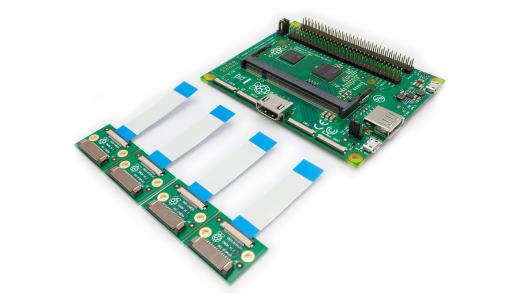
If you’re serious about your project, you may wish to consider developing around the Raspberry Pi compute module. It’s ideal if you want to ship a product with the Pi as its brain and need to control the layout and the space it takes up. The compute module has been used in products and prototypes for a range of applications, including media centers, digital signage solutions, box set TVs, and even cubesats.
Compute module development kits are available from around $150, but they’re only intended to get you started. The idea is you design your own IO board and slot the module into it. Modules are available at around the price of a Pi, roughly $30 depending on number of orders. The upgrade to a Pi 3 CPU module is expected soon. The great thing is you will be able to swap out a CM1 for CM3 with no hassle.
The compute module also allows you to connect two cameras (for stereoscopic photography) and two displays. You could even use it simply to gain access to the massive 120 GPIO pin header to control more physical devices.
You can actually design a PCB which takes multiple compute modules, which can open up possibilities for supercomputing, parallelism, and more!
Pros: Layout customization, extra GPIOs, extra camera and display ports.
Cons: More expensive to get started, CM3 not available yet, intended for more advanced users only.
Perfect for: Mass-produced products requiring custom layout.
Alternatively, you could make use of the Raspberry Pi customization service offered by element14 and have a bespoke Pi based on an existing model designed to your specification (within physical limitations!).
Older models
I’ve only covered the models which are on general sale, but if you have an old Pi sitting in a drawer it might be perfect for one of your projects. If you don’t need the speed or power of a Pi 3, don’t need to add a HAT, and don’t need all the GPIO pins, your old 2012 Raspberry Pi will happily do your bidding for you. Pull it out of the drawer, blow off the dust, and have it do something! These old Pis are perfect for file servers, NAS drives, IoT home automation systems, and more.
[ad_2]
Source link